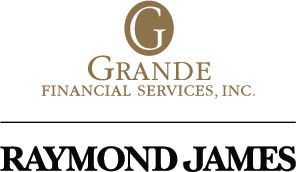
The sword and shield of investing

There are strategies you can implement to protect part of your portfolio against downside moves. This is like having a sword in one hand and a shield in the other.
How many “Spartacus” movies have you seen where the warriors are holding a weapon in each hand? None that we can remember. One could suppose that two swords would allow you to slay more of the enemy, but you wouldn’t last long being unprotected.
The same with having two shields and no sword. You could prolong your demise a bit but make no advances without a weapon.
It is like this with investing. There is a war going on in which an investor must prevail over forces like inflation, longevity, retirement expenses, economic downturns, geopolitical upheavals, and systematic and unsystematic risks. As investors, we must be looking for growth, yet protect ourselves, a fine balance like the warrior holding both the sword and the shield.
We could ask the obvious: Why does one invest in the first place? We hold that it is to create a store of wealth from which we can withdraw sometime in the future, when needed, ordinarily for the rest of our lives.
One of the most insidious and stealth of these enemies we are facing is inflation. As an example, when generating a comprehensive retirement analysis for a client, we look for a probability of success of no less than 75%.
Let us look at what happened when we added just 2% to the customary 3.5% that we usually assume, which was the average inflation rate for the last 40 years, to a particular client’s analysis. Increasing the inflation rate to 5.5%, the probability of their success decreased from 85% to 42%.
What we found interesting was that another client with a 99% probability only dropped to a probability of 89% when we made the same change from 3.5% to 5.5%. This seemingly demonstrates that in these cases, the higher store of wealth accumulated insulated better against inflation. This would assume an average 5.5% for the next 30 years, according to these particular plans’ time horizon. The point to be noted is that inflation steals from you, often without you noticing it.*
Some of the other combatants we see in front of us are the unsettling market gyrations, temping those more nervous investors to sell their positions and go to cash or some other safe haven. Then, trying to find the right time to re-enter the markets, most likely after they have risen back up again. This creates a “sell low” and “buy high” strategy which is the opposite of buying low and selling high, which we all strive to do. But fear will do that to you when you don’t have a plan or some hedging strategies in place.
Now, we can add the newest threat to a financially sound retirement—longevity.
This is sort of a mixed bag in that it is a problem, but seemingly a good one, since this means we are living longer.
With the above in mind, what is one to do? How do you remain the aggressor against these worthy adversaries, while protecting your accumulating wealth?
The first part of this answer is to know all the facts regarding your own situation. If you don’t know where you are going, it’s going to be quite difficult to arrive there. This is why we urge doctors to have a comprehensive financial plan created for them. It’s a small effort that will serve you well for the rest of your lives.
There are many variables that will be considered, including but by no way complete: How old are you now? How much have you already accumulated?What are your short-, intermediate and long-term goals? Buying a second home? Children’s education expenses? Retirement age target? Special needs children? Income needs in retirement? Assumed rate of return? Assumed inflation rate? Long-term-care possibilities?
When data is collected and input into a Monte Carlo (regressive analysis) probability study, it will greatly help you to become grounded in the reality of your ideals and goals. With the completion of a plan, questions will be answered concerning: Am I saving enough? How much should I have in equities? When can I retire?
How much can I realistically spend in retirement? How much can I leave to my heirs? Can I own that second or third home? With a plan you will know how much of your invested assets should be allocated to the market, which will hopefully alleviate those knee-jerk reactions of making investment decisions based on fear or greed and getting whipped-sawed.
Now, back to the sword and the shield. Luckily, today there are many sophisticated investment vehicles for high-net-worth investors such as yourselves. These investments can assist you in participating in market gains, sometimes with a cap, sometimes with a multiplier, while providing what is referred to as a barrier, or buffer on the downside.
In other words, there are strategies you can implement to protect part of your portfolio against downside moves. This is like having a sword in one hand and a shield in the other! In addition, there are investment vehicles available that can act much like the old defined benefit plans, providing a lifetime income to fill the gap between income needed at retirement and what a portfolio should generate within prudent guidelines. This additional dependable and recurring income takes pressure off of you and your portfolio.
Generally, this is ideal for fixed expenses in retirement. All of this is meant to work like a symphony in harmony with your total plan.
The structured investments alluded to above are complicated and need to be explained very carefully by a financial professional, as well as you reviewing all relevant disclosures and client materials. But, not knowing about them could be a chink in your armor since we are on the topic of swords and shields. For more information, please feel free to contact us.**
*This case study is for illustrative purposes only. Individual cases will vary. Any information is not a complete summary or statement of all available data necessary for making an investment decision and does not constitute a recommendation. Prior to making any investment decision, you should consult with your financial advisor about your individual situation.
Certified Financial Planner Board of Standards Inc. owns the certification marks CFP®, Certified Financial Planner™, CFP® (with plaque design) and CFP® (with flame design) in the U.S., which it awards to individuals who successfully complete CFP Board’s initial and ongoing certification requirements.
Diversification does not guarantee profits or protection against losses.
**There are unique risks associated with structured investments, and some risks vary by issue. Common risks include, but are not limited to:
Understanding performance
Creditworthiness
Market-linked notes are senior, unsecured obligations backed by the creditworthiness of the issuing firm. Market-linked CDs are principal protected (when held to maturity) and FDIC insured to applicable limits.
Liquidity/Statement value
Structured investments are designed to be held to maturity/call date. The investments have limited liquidity with a secondary market that is not guaranteed. Redemptions prior to maturity may result in loss of principal. Secondary market values, typically discounted, appear on client statements during the investment’s term.
Even with protection features, a market-linked note investor can suffer a loss based on investment terms and performance of the underlier. Understanding trade-offs and scenarios where you outperform or underperform the underlier is important when setting performance expectations.
Fees
Structured investments typically involve fees greater than other methods of accessing the performance of an underlier. These fees are typically stated on the front page of the investment’s offering documents and should be taken into account when assessing the merits of any investment.
Taxes
Tax treatment varies by offering.
Investment advisory services offered through Raymond James Financial Services Advisors, Inc. Grande Financial Services, Inc. is not a registered broker/dealer and is independent of Raymond James Financial Services. © 2022 Securities offered through Raymond James Financial Services, Inc., member FINRA / SIPC | Legal Disclosures | Privacy, Security & Account Protection | Terms of Use Raymond James financial advisors may only conduct business with residents of the states and/or jurisdictions for which they are properly registered. Therefore, a response to a request for information may be delayed. Please note that not all of the investments and services mentioned are available in every state. Investors outside of the United States are subject to securities and tax regulations within their applicable jurisdictions that are not addressed on this site. Contact your local Raymond James office for information and availability. Links are being provided for information purposes only. Raymond James is not affiliated with and does not endorse, authorize or sponsor any of the listed websites or their respective sponsors. Raymond James is not responsible for the content of any website or the collection or use of information regarding any website's users and/or members.
John S. Grande, CFP®
Registered Principal, RJFS
Managing Partner, GFS
Grande Financial Services, Inc.
257 Monmouth Road
Oakhurst, NJ 07755
800-722-1258
Any opinions are those of John S. Grande and not necessarily those of Raymond James. Expressions of opinion are as of this date and are subject to change without notice. There is no guarantee that these statements, opinions or forecasts provided herein will prove to be correct. Investing involves risk and you may incur a profit or loss regardless of strategy selected. Past performance does not guarantee future results. Future investment performance cannot be guaranteed, investment yields will fluctuate with market conditions.
You should discuss any tax or legal matters with the appropriate professional.
Newsletter
Don’t miss out—get Ophthalmology Times updates on the latest clinical advancements and expert interviews, straight to your inbox.



















































.png)


